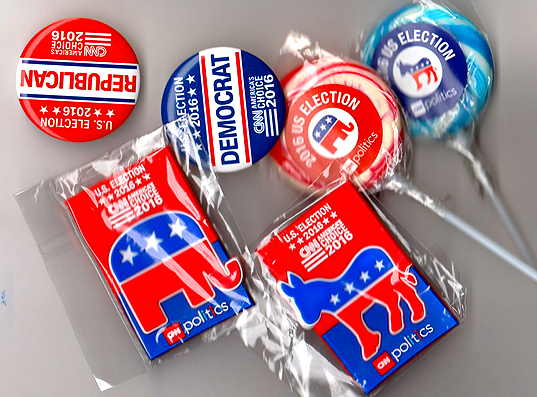Search
Recent comments
- patriotism....
5 hours 21 min ago - belittling russia......
5 hours 49 min ago - Запад толкает Украину на последнюю битву....
6 hours 3 min ago - fourteen points....
6 hours 12 min ago - der philosophische glaube....
6 hours 23 min ago - seriously?...
6 hours 37 min ago - AfD....
7 hours 5 min ago - undesirables...
7 hours 21 min ago - assistant spies......
7 hours 46 min ago - brics.....
10 hours 54 min ago
Democracy Links
Member's Off-site Blogs
I'm not a racist, but...

The field of “Trump studies” is vast—but disappointingly homogenous.
One way to understand its paradoxical scope and uniformity is through co-occurrence searches on Google Scholar. A query for “Donald Trump” and “racism,” for instance, would net you more than 8,000 articles published since 2016 in journals or textbooks or cited in academic research. “Donald Trump” and “white supremacy” brings in about 1,800 results. “Donald Trump” and “xenophobia” exceeds 2,400 hits. You get the idea.
These are astonishing numbers considering the slow turnaround time for publication of journal articles, the lag time before an article appears on Google Scholar, the restrictiveness of the search criteria, etc. While there’s certainly some overlap, it is clear that a massive body of literature has rapidly developed around Trump, his supporters, and their alleged racism (one can also find a parallel corpus about Trump and sexism, misogyny, and toxic masculinity).
Survey the titles and abstracts of these works, page after page, and you’ll be hard-pressed to find a single article that challenges the prevailing narrative that Trump voters were driven largely, or even primarily, by anti-minority or white-supremacist sentiments. Given all the ink spilled on this topic by highly educated scholars across a range of disciplines using diverse methodologies and theoretical frameworks, it seems reasonable to assume that the case is airtight: Donald Trump is a racist and so are those who voted for him.
There’s just one problem: the actual voting data.
- The most decisive votes for Trump in 2016 came from districts that went for Barack Obama in 2008 and 2012. It is unclear why these voters, if horrified at the prospect of a black president, would have voted Obama into office to begin with—let alone given him another four years to advance his agenda when he stood for reelection should they have developed buyers’ remorse.
- The election did not constitute a rejection of Barack Obama: Obama’s popularity remained high throughout the 2016 cycle. In fact, his popularity rose over the course of the campaign, even as the ratings for Trump and Clinton plummeted. More than a year into Trump’s presidency, Obama remains highly popular.
- Trump did not spearhead a white uprising: participation rates among whites were roughly equivalent to those in 2012 and lower than those in 2008. In fact, whites made up a smaller share of the electorate than they had in previous cycles, while Hispanics and Asians were better represented.
- Of those who did turn out, Trump actually won a lower share of the white vote than Mitt Romney. He was able to win because he won a larger share of Hispanics and Asians than his predecessor, along with the largest share of the black vote of any Republican since 2004.
When confronted with these inconvenient facts, the most common retort is something along the lines of “Trump shouldn’t have been a viable candidate to begin with. The fact that he was elected despite his racist, sexist (fill in the blanks) language—that this rhetoric was not disqualifying—suggests that his xenophobia, misogyny, etc. resonate strongly among his supporters.”
But does it really suggest this? A “turnabout test” can be illuminating on this point. Here’s how it works.
Take your interpretation of a given social phenomenon and change the agent or subject, ideally switching actors you are negatively predisposed towards for ones you are positively inclined towards, or vice-versa. If your judgments about the appropriateness of the analysis shift in a substantial way depending on its referent, chances are you are biased and need to rethink things a bit.
For instance:
- Hillary Clinton has a long record of hawkishness, surpassing even most of the Republican candidates in the 2016 cycle. The only other candidate in either party with such an extensive and unqualified record of support for war—any and all—might have been “issue” candidate Lindsay Graham (his issue? Be hawkish!).
- Indeed, during the primaries, Clinton actually relied on the same foreign policy consulting firm that advised hawks Marco Rubio and Ted Cruz. Her general election national security advisor team was populated with many of the same people who oversaw the worst excesses of the Bush II administration.
Read more:
http://www.theamericanconservative.com/articles/social-science-fails-to-...
- By Gus Leonisky at 7 May 2018 - 12:34pm
- Gus Leonisky's blog
- Login or register to post comments
and still not a russian in sight, except in the cross-hairs...
In the near future, Congress will debate a new Authorization for Use of Military Force (AUMF). I use the word “debate” lightly. So far, no hearings have been scheduled, and no testimony is likely to be heard unless something changes. That’s a shame, because this is a serious matter, and this is a deeply flawed AUMF.
For some time now, Congress has abdicated its responsibility to declare war. The status quo is that we are at war anywhere and anytime the president says so.
So Congress—in a very Congress way of doing things—has a “solution.” Instead of reclaiming its constitutional authority, it instead intends to codify the unacceptable, unconstitutional status quo.
It is clear upon reading the AUMF, put forward by Senators Tim Kaine and Bob Corker, that it gives nearly unlimited power to this or any other president to be at war whenever he or she wants, with minimal justification and no prior specific authority.
Read more:
http://www.theamericanconservative.com/articles/rand-paul-congress-moves...
Picture at top?... Lollipops and badges supplied on the day of the elections by CNN... Picture by Gus.